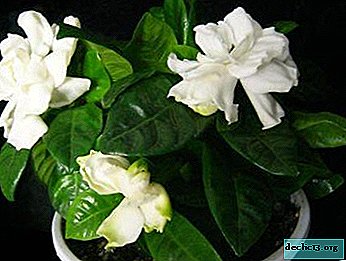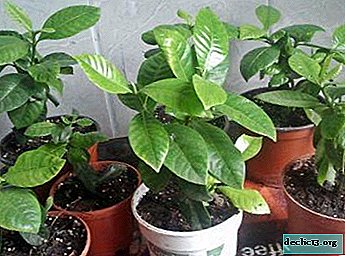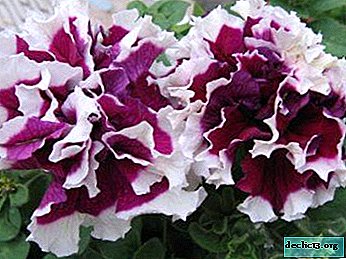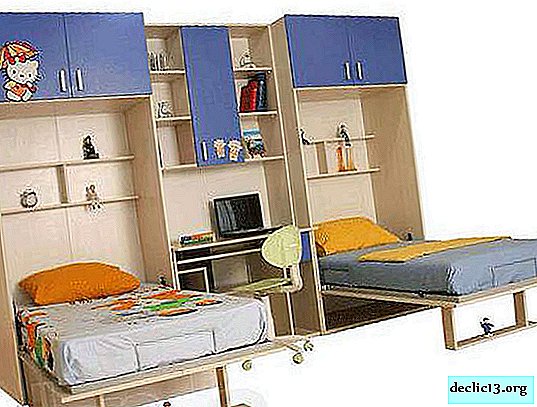The nuances of gardenia propagation at home

Gardenia is a flowering plant from the madder family. Its flowers are at first greenish-yellowish, similar to roses. When dissolved, they turn white. It is famous for its pleasant delicate aroma, so gardenia flowers are often used in perfumes. The plant has glossy leathery leaves that give the plant attractiveness.
The name Gardenia was given on behalf of the American gardener and naturalist of the XVIII century - Alexander Garden. The genus gardenia consists of 134 species. As a houseplant, jasmine gardenia is known, which has been grown in culture for about two centuries. For all its beauty, the plant is rather capricious, and it is very difficult to propagate at home.
Breeding methods
Gardenia can be propagated:
- cuttings;
- division of the bush;
- seeds.
At home, gardenia is most often propagated by cuttings.. Cuttings are taken in spring or autumn, semi-lignified. Since gardenia has a low rooting percentage, it will be better to harvest 3-5 cuttings immediately.
Cuttings
 Prepare and sanitize a container for planting and a tool for cutting cuttings. It can be a knife, scalpel or razor blade. Do not use scissors, as the cut will be uneven, and this will affect the further rooting process.
Prepare and sanitize a container for planting and a tool for cutting cuttings. It can be a knife, scalpel or razor blade. Do not use scissors, as the cut will be uneven, and this will affect the further rooting process.- Carefully cut the apical cuttings 10 cm long and remove leaves from them, leaving only two or three pairs on top. Shorten the remaining leaves by a third so that they do not dry out the stem of the stem.
- Treat the cuttings with root stimulants such as rootin or heteroauxin.
- Place the cuttings in a container with prepared soil so that the lower leaves do not touch the substrate. Use a transparent container with a tight-fitting lid, or place the pot in a transparent bag to maintain high humidity. As soil, use coarse sand or a mixture of coarse sand, perlite, peat and vermiculite in a ratio of 1: 1: 1: 1. Read about soil and pot selection here.
- Carefully pour the cuttings with warm, settled water. The soil must be constantly moist, but not wet.
- Close the container and place in a warm place. Gardenia rooting occurs at a temperature not lower than 25-27 degrees. If possible, arrange the bottom heating cuttings.
- If condensation forms, ventilate the cuttings until moisture evaporates from the vessel walls.
- If desired, attach a marker with a planting date to monitor the rooting time. The rooting of gardenia is a long process and takes 1-1.5 months. Until this time, try not to disturb the cuttings.
- If one of the cuttings dries up or turns black, then immediately remove it from the total capacity so that the infection does not spread to other cuttings, or use separate containers for each rooted shoot.
- Carefully remove the rooted cuttings, taking care not to damage the roots, and transplant into a mixture of peat, coniferous earth and sand. Also for planting, you can use the ready-made mixture for azaleas.
Watch a video about gardening cuttings:
Bush division
Adult overgrown gardenia can be divided if several shoots grow from a pot.. This method of reproduction gives more guarantees and faster in time.
- To divide, remove the plant from the pot and carefully cut the top of the earth coma according to the number of future divisions.
- After that, with your hands, separate each dividend from the general coma, trying to keep the root system to the maximum.
- Plant young plantlets in pots slightly larger than their roots and place in a greenhouse for 2 weeks to adapt.
Seeds
Choose the freshest seeds to plant. You can buy them at a specialized flower shop.
 Prepare a bowl with a substrate and when planting, deepen the seeds by no more than 0.5 cm. Use soil prepared for azaleas or coarse sand.
Prepare a bowl with a substrate and when planting, deepen the seeds by no more than 0.5 cm. Use soil prepared for azaleas or coarse sand.- After sowing, moisten the top layer of the spray gun, cover the seeds with a bag, lid or glass.
- Ventilate and remove condensation regularly.
- The first shoots appear 3-4 weeks after sowing.
- After the seedlings appear 3-4 pairs of real leaves, plant them in separate small pots in the soil for azaleas and continue to keep in the greenhouse.
- When transplanting, you can pinch the tops so that the bushes grow lush and branched.
- Shelter can be removed after the gardenia reaches a height of at least 10-15 cm.
After acquiring seeds, start sowing as soon as possible. Gardenia seeds are poorly stored and quickly lose their germination. On average, 30-50% of seeds germinate.
Watch a video about gardenia propagation by seeds:
Follow-up care
In the early months, young plants need close attention and care.. Gardenia should be removed from the greenhouse gradually, increasing the ventilation time every day by 1-2 hours. Water the plants with warm and soft water. At the first signs of chlorosis, treat the plants with iron chelate and use acidifiers for the soil:
- alum aluminum;
- iron sulfate;
- colloidal sulfur;
- lemon acid.
Gardenia needs high humidity, so do not forget to spray it at least once a day. At the same time, keep the plant warm and protect from drafts. Over time, the plants get stronger and become less demanding on this procedure. During the budding period, the plant is in dire need of high humidity. If your gardenia has decided to bloom, then place the pot on a pallet with wet moss or expanded clay. What to do if your beauty does not want to bloom, you will learn in this article.
ATTENTION! Do not turn the flowering plant relative to the light source, otherwise the gardenia may lose buds and flowers.The plants are transplanted as necessary, choosing a pot 2-3 cm larger than the previous one. The first years of life, this procedure should be performed annually, adult plants transship every two to three years.
Gardenia is photophilous, but young plants should not be immediately exposed to the sun. First, gardenia should be shaded from sunlight and, over time, increased its intensity to bright diffused. The optimum temperature for the content of gardenias is 20-25 degrees. In winter, it should not fall below 16 ° C. During growth and development, feed the plants with complex fertilizers for azaleas and rhododendrons, following the instructions on the package.
Conclusion
Gardenia - a demanding flower, for successful propagation and cultivation of which you need to know the subtleties and features in the content of this plant. But if you are not afraid and spend enough time and effort, then gardenia will thank you with a lush green bush and fragrant flowers.

 Prepare and sanitize a container for planting and a tool for cutting cuttings. It can be a knife, scalpel or razor blade. Do not use scissors, as the cut will be uneven, and this will affect the further rooting process.
Prepare and sanitize a container for planting and a tool for cutting cuttings. It can be a knife, scalpel or razor blade. Do not use scissors, as the cut will be uneven, and this will affect the further rooting process. Prepare a bowl with a substrate and when planting, deepen the seeds by no more than 0.5 cm. Use soil prepared for azaleas or coarse sand.
Prepare a bowl with a substrate and when planting, deepen the seeds by no more than 0.5 cm. Use soil prepared for azaleas or coarse sand.















